
The Complete Guide to Reading Assistant for ADHD
Transcribe, Translate & Summarize in Seconds
Transcribe, Translate & Summarize in Seconds
Do you zone out or give a blank stare all of a sudden, and aren't able to follow through with tasks? If this happens more often, you may have a condition called ADHD. It’s a neurodevelopmental disorder that causes people to struggle with tasks that require sustained attention, such as reading. In such a situation, a reading assistant like Speaktor can be a perfect solution.
Speaktor, Murf, Speechify, ElevenLabs, and NaturalReader are among the best reading assistants for ADHD available today. From reducing cognitive load by reading out loud to improving comprehension, these TTS can change how people with ADHD read.
- Speaktor: With support for 50+ languages and premium voice quality, it’s a leading reading assistant for people with ADHD.
- Murf: The human-like voices and the customizations of Murf make it easy for users to comprehend the written content.
- Speechify: Ideal for users who want to adjust the listening speed and access a flexible learning experience.
- ElevenLabs: Advanced AI voice generation with unmatched realism for better comprehension.
- NaturalReader: Features like advanced pronunciation control, enlarged text size, and others make learning more accessible.
What is ADHD?
ADHD or Attention Deficit Hyperactivity Disorder is a common neurological disorder that affects both children and adults. An individual with the condition might not be able to keep focus, can get hyperactive, and act hastily sometimes. Their inability to maintain focus also affects their learning abilities, as they might struggle with reading, writing, or completing homework assignments. They may also struggle with organizing, managing time, and controlling their impulses.
According to the CDC, the following are a few ADHD stats to understand how it affects people in the U.S.
- More than 1 million U.S. children aged between 3 and 17 years were diagnosed with ADHD in 2022, compared to 2016, accounting for 7 million.
- Boys (15%) are more likely to be diagnosed with ADHD than girls (8%).
- Around 4 in 10 of the children with ADHD had anxiety.
How to Deal with ADHD using ADHD Management Strategies?
ADHD can cause reading problems, difficulty keeping up with work, and organizing tasks. Fortunately, there are ADHD management strategies that can help you better understand and be more productive, organized, and in control of your life. These are explained below.
- General Treatment Options: Medications can help people manage their ADHD symptoms in their everyday lives and control their behaviors. The FDA has approved stimulants and non-stimulants to help reduce the ADHD symptoms amongst children as young as age 6. Aside from it, some children with ADHD also receive behavioral therapy to help manage the symptoms and add coping skills.
- Lifestyle Changes: Working out and taking in a balanced diet are probably the best ways to tackle hyperactivity and reduced attention span due to ADHD. Daily exercise can calm your mind, reduce stress, and help work off excess energy and aggression. Besides, foods rich in vegetables, fruits, whole grains, and limited sugar can help stabilize energy and prevent crashes and mood shifts.
- Environmental Control: Do you know that just tweaking the surroundings can help manage ADHD? Things like keeping the space organized and clean, limiting background noise, and creating a regular schedule can reduce distraction and help establish peace of mind.
- Technology for Day-to-Day ADHD Management: Several technologies can provide support for daily ADHD management. For example, Speaktor’s text-to-speech app can read aloud your learning material in natural voices and accents. You can also have smart devices to set alerts and timers, a calendar, and reminder systems. These can be a lifesaver, as they help comprehend better, stay organized, and on track.
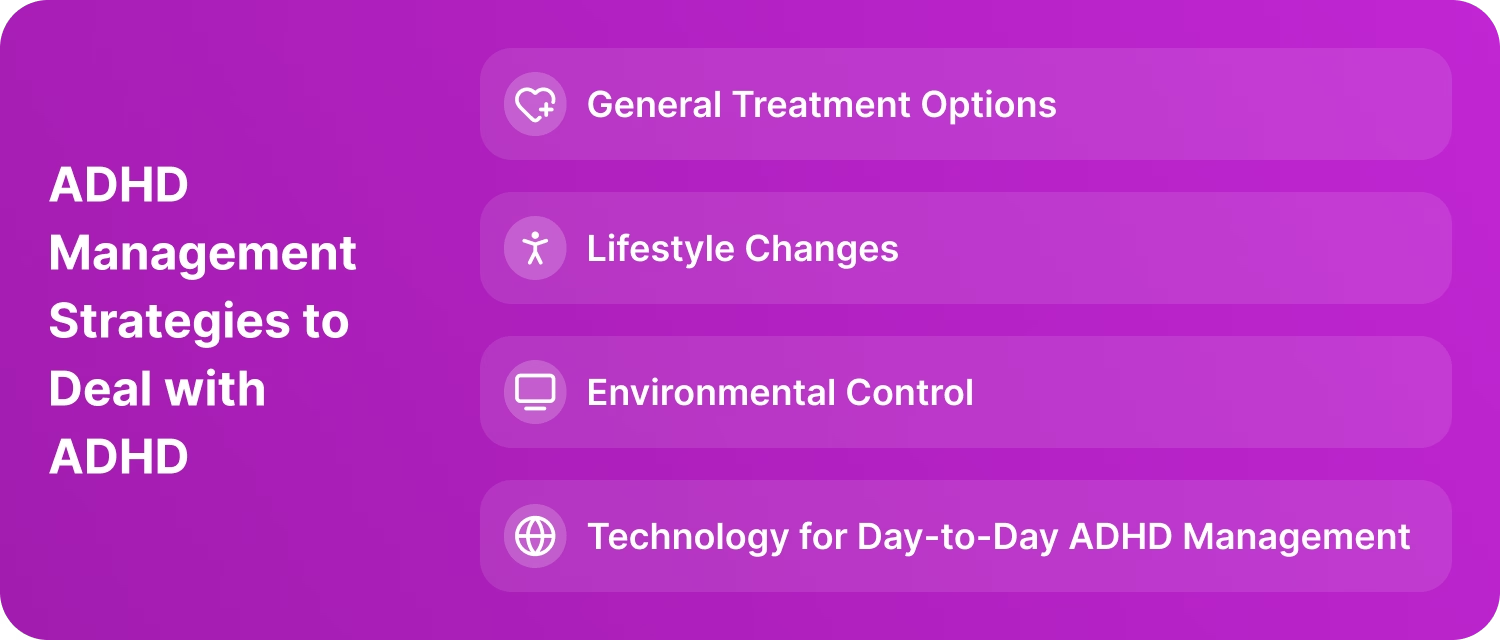
How Is Text-to-Speech Technology Beneficial for People with ADHD?
Text-to-speech technology can help people with ADHD improve focus, control their learning pace, and reduce eye strain. Basically, text-to-speech is an assistive technology that reads a digital text aloud. As you input a text into the TTS system, it breaks the text into smaller units, analyzes it, and converts it into an audio waveform. Modern TTS systems use neural networks to produce voices that mimic the nuances, stress, and intonation of a human.
Here are the ways in which text-to-speech technology benefits people with ADHD, explained in detail.
- Improved Focus: Imagine someone reading your learning materials aloud so you don’t get distracted by things going on around you. It benefits people with ADHD who have difficulty concentrating. Tools like Speaktor also deliver a natural flow, so it feels as if you’re listening to a live narrator, which helps in better comprehension.
- Better Organization: Individuals with ADHD often struggle to keep pace with the learning curriculum. Here, the TTS tools can be a reading aid for ADHD users. They can adjust the speed and volume of the audio, so users can easily control their pace of reading and stay on track.
- Reduced Eye Strain: Sustained reading can be tiring for anyone, especially for people with ADHD who have difficulty focusing. TTS eliminates the need for extensive reading, which potentially reduces eye strain and fatigue.
- Accessibility: TTS not only helps ADHD users but also makes written materials accessible to those with visual or reading impairments. It also allows people to absorb information more efficiently and effectively.
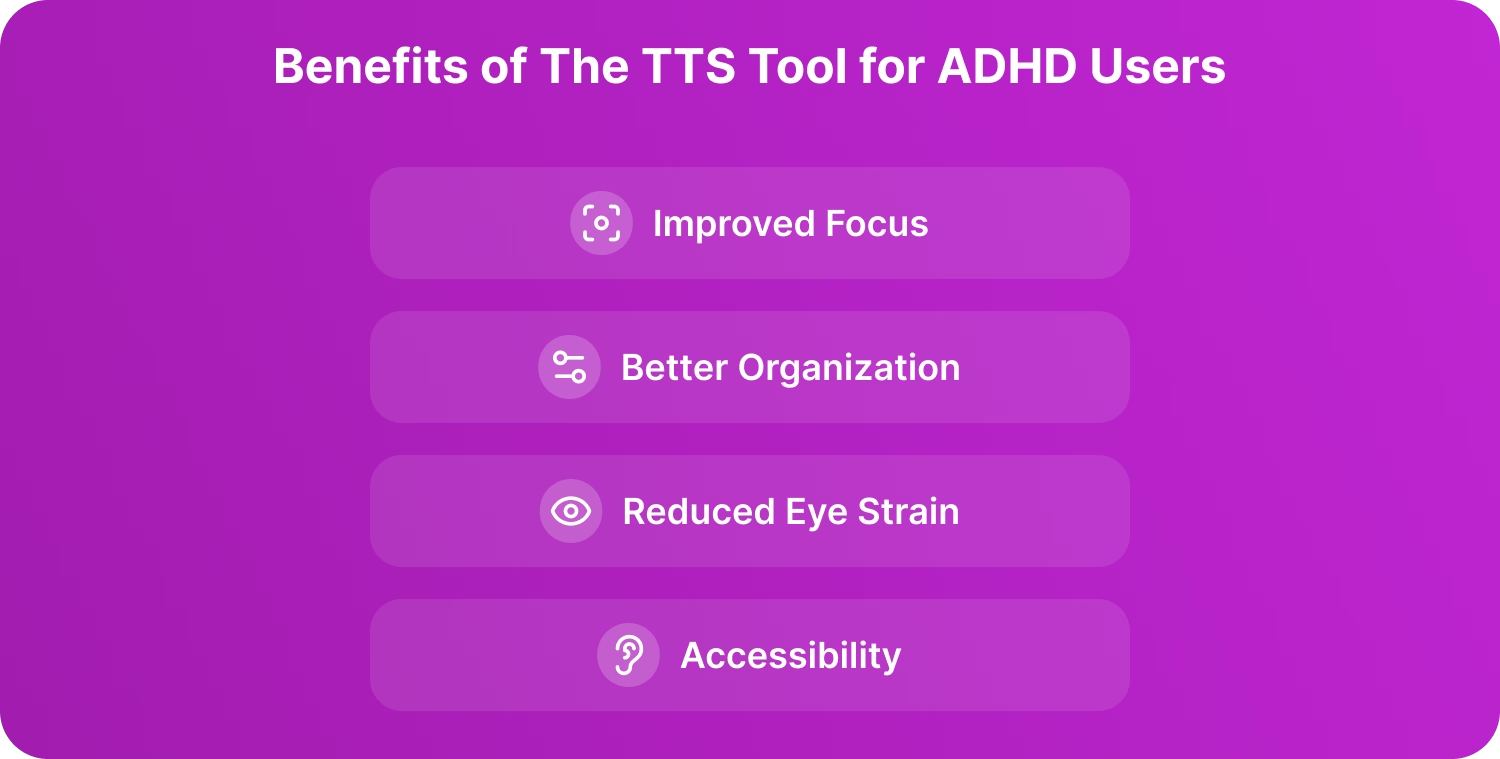
What are the 5 Best Reading Assistance Tools for People with ADHD?
The five best reading assistance tools for people with ADHD are Speaktor, Murf, Speechify, ElevenLabs, and NaturalReader. AI adoption, particularly generative AI adoption, has skyrocketed. As per Microsoft, Generative AI usage jumped from 55% in 2023 to 75% in 2024. As a result, many TTS apps have crowded the market.
So, when selecting the ADHD reading tools, the focus was to check how these tools hold up in everyday situations. That includes reading lengthy learning materials and pronouncing technical terms accurately. The following tools fared well in the performance evaluation tests.
- Speaktor: Speaktor is an excellent reading assistant for ADHD users with 50+ languages, 15+ voices, and flexible export options.
- Murf: With plenty of AI voices in 20+ languages and accents, Murf can be a viable reading companion.
- Speechify: It’s a speech-focused reading with celebrity voices and multiple customization options.
- ElevenLabs: It can mimic a human tone and emotional nuance in 70+ languages and has features like voice cloning and API access.
- NaturalReader: NaturalReader is a comprehensive solution with a variety of voices and advanced filtering.
1. Speaktor
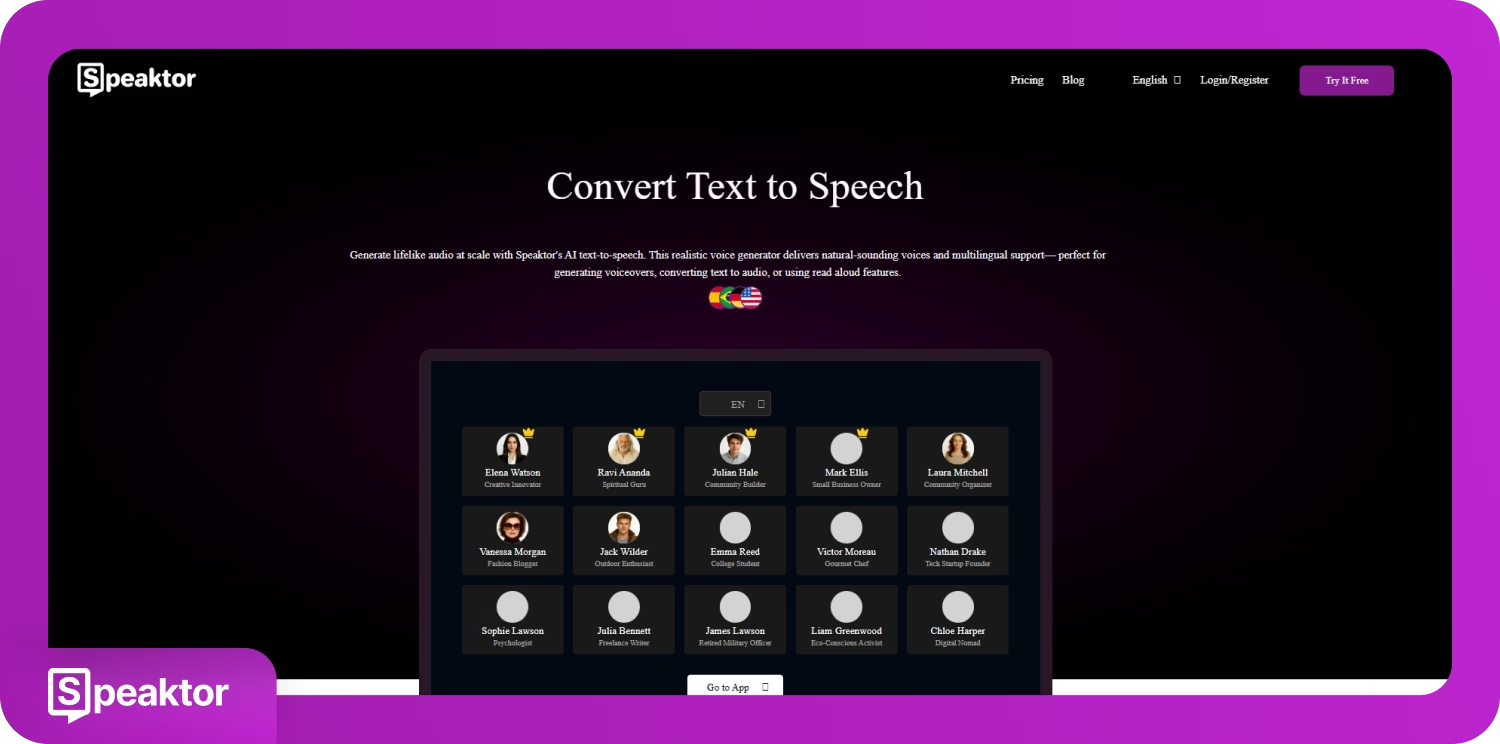
Speaktor is an AI-powered solution with a user-friendly interface that supports text-to-speech functionality in 50+ languages. People with ADHD can use it to induce a positive impact on their lifestyle. It’s like your personal narrator who can read any of your reading materials, lecture notes, or books in a voice and pace that you can comprehend. This way, you can complete the learning material at your own pace and perform better academically. Speaktor not only helps ADHD users, but businesses can also use it to create product demos that guide customers effectively.
Key Features
- Language Support: Whether your text is in English, Chinese, or French, Speaktor can read out your written text in 50+ languages.
- 15+ Voice Styles: Listen to your written text in Emma Reed’s (College Student) or Julia Bennet’s (Freelance Writer) voice, alongside other voice options.
- Speed Control: Speaktor lets you choose from 0.5x to 2.0x speed, so you can control the pace of your learning.
- Cross-Platform Compatibility: The tool is available on the web, mobile, and Chrome extensions for better accessibility.
Plans and Pricing
- Lite: At $4.99/month (billed annually), you have up to 90 minutes of voice generation and access to native Speaktor features.
- Premium: At $12.49/month (billed annually), you get 600 minutes of voice generation per month, aside from additions like Zapier integration, unlimited downloads, and storage.
- Business: Pay $30/month per seat (billed annually), you have 3000 minutes of voice generation.
- Custom: You can create a custom plan depending on your monthly voice generation needs and features.
2. Murf
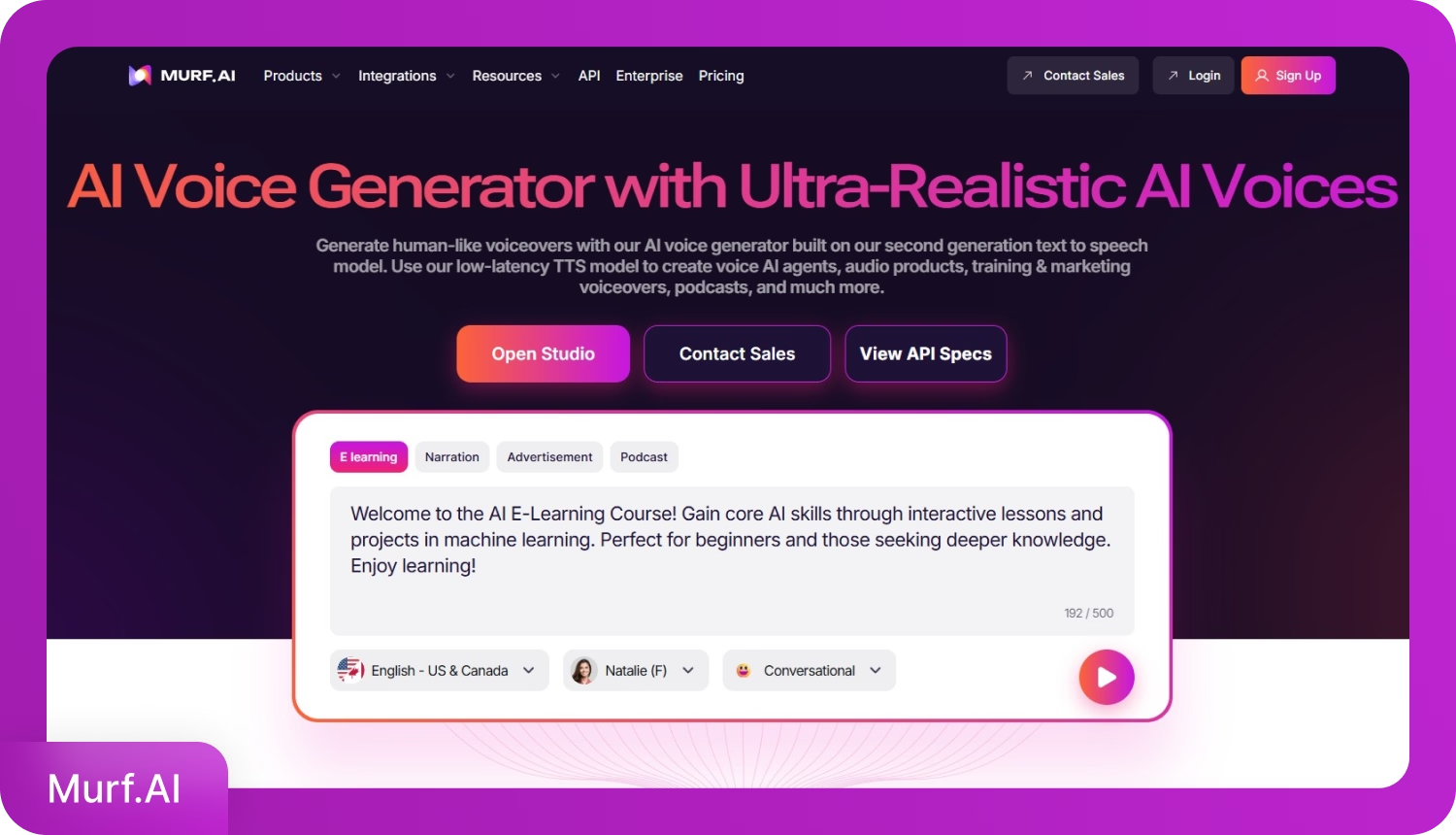
Murf can be a viable reading assistant for ADHD through its wide range of language options, realistic voices, and multiple accents. Its AI-driven features let you customize the speed, pronunciation, and pitch and edit voice recordings, so you have high-quality audio every time.
Key Features
- 20+ Languages: Murf has plenty of languages spanning across different accents, tonalities, styles, and emotions.
- Multiple Export Formats: You can export the voiceover in multiple file formats, including MP3, WAV, and FLAC for audio, and MOV and MP4 for video.
- Customizations: It lets you customize how it pronounces a word, its pace, and how loud it sounds.
- Real-time Collaboration: The tool allows businesses to bring all team projects to one place and work in a unified way.
Plans and Pricing
- Creator: At $19/month (billed annually), you have access to 100 projects with 24 hours/year of voice generation.
- Business: At $66/month (billed annually), you have access to 500 projects with 96 hours/year of voice generation.
- Enterprise: You can design a custom plan as per your voiceover needs.
3. Speechify
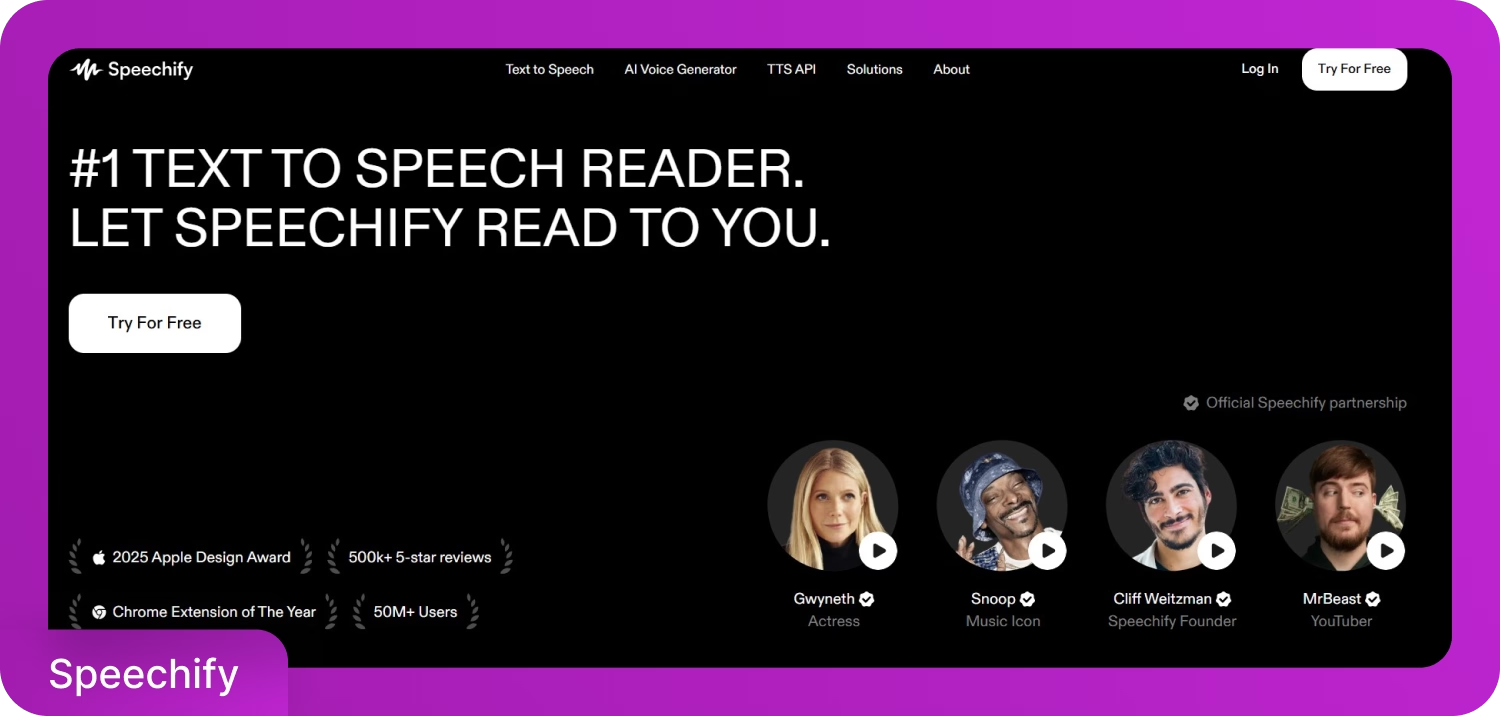
Speechify can be a suitable companion for individuals with ADHD, offering multiple language support and being based on advanced AI and optical character recognition. Similar to Murf, you can slow down or speed up the AI narrator and highlight individual passages to listen to. Aside from that, its user-friendliness and multi-platform compatibility make it a popular choice.
Key Features
- AI Summary: Listen to the pages of your written document in small, bite-sized summaries.
- 60+ Languages: Make celebrities like Mr. Beast, Snoop Dogg, and Gwyneth Paltrow read out your text in English, Chinese, French, and other languages.
- Speed Control: You can make Speechify read a text document at up to 5x speed.
- Cross-platform Compatibility: It works on your web browser and as an app on iOS, Android, Windows, and macOS.
Plans and Pricing
- Monthly: At $29/month, you have access to 200+ high-quality voices in 60+ different languages.
- Annual: Priced at $11.58/month (billed annually), with a total of $138.96.
4. ElevenLabs
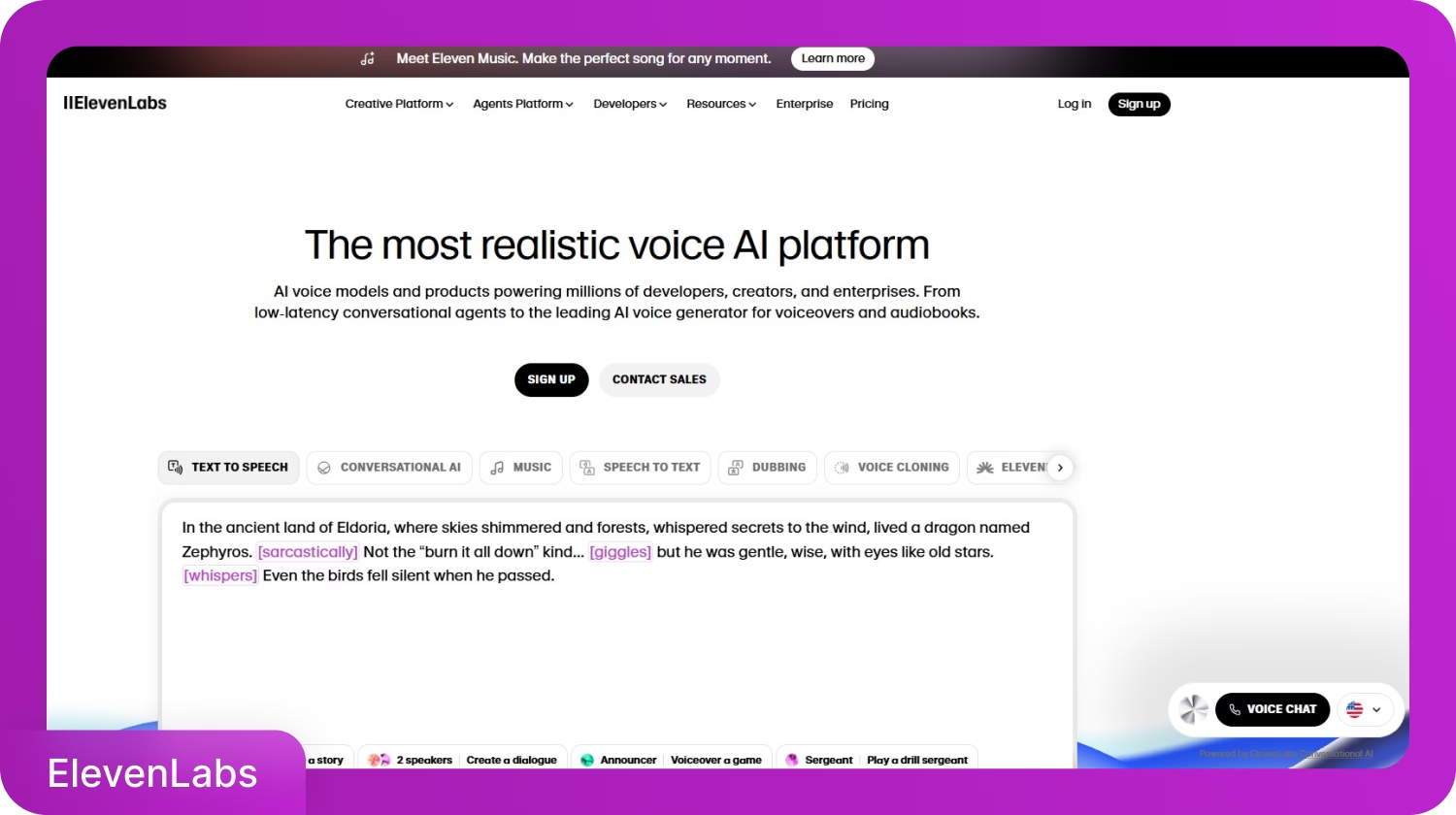
Rather than those robotic voices, ElevenLabs can be your human narrator that captures human emotions and breathing patterns. They also help create an AI voice that sounds like their own. When ADHD users listen to a written text in their own voice, they tend to associate more with the person and remember it longer.
Key Features
- Voice Cloning: ElevenLabs lets you create custom voices from audio samples for personalized content creation.
- Multiple Language Support: It supports 70+ languages in various accents and pronunciations, adding to its accessibility.
- Massive Voices Library: You can choose from plenty of voices available in the tool's library.
- API Access: Integrate voice generation into custom applications and workflows for a variety of uses.
Plans and Pricing
- Starter: At $5/month, you get access to 30k credits/month alongside the native text-to-voice features.
- Creator: At $11/month, it offers professional voice cloning, higher quality audio, and 100k credits/month.
- Pro: At $99/month, you get 500k credits/month and all features in the creator plan.
5. NaturalReader
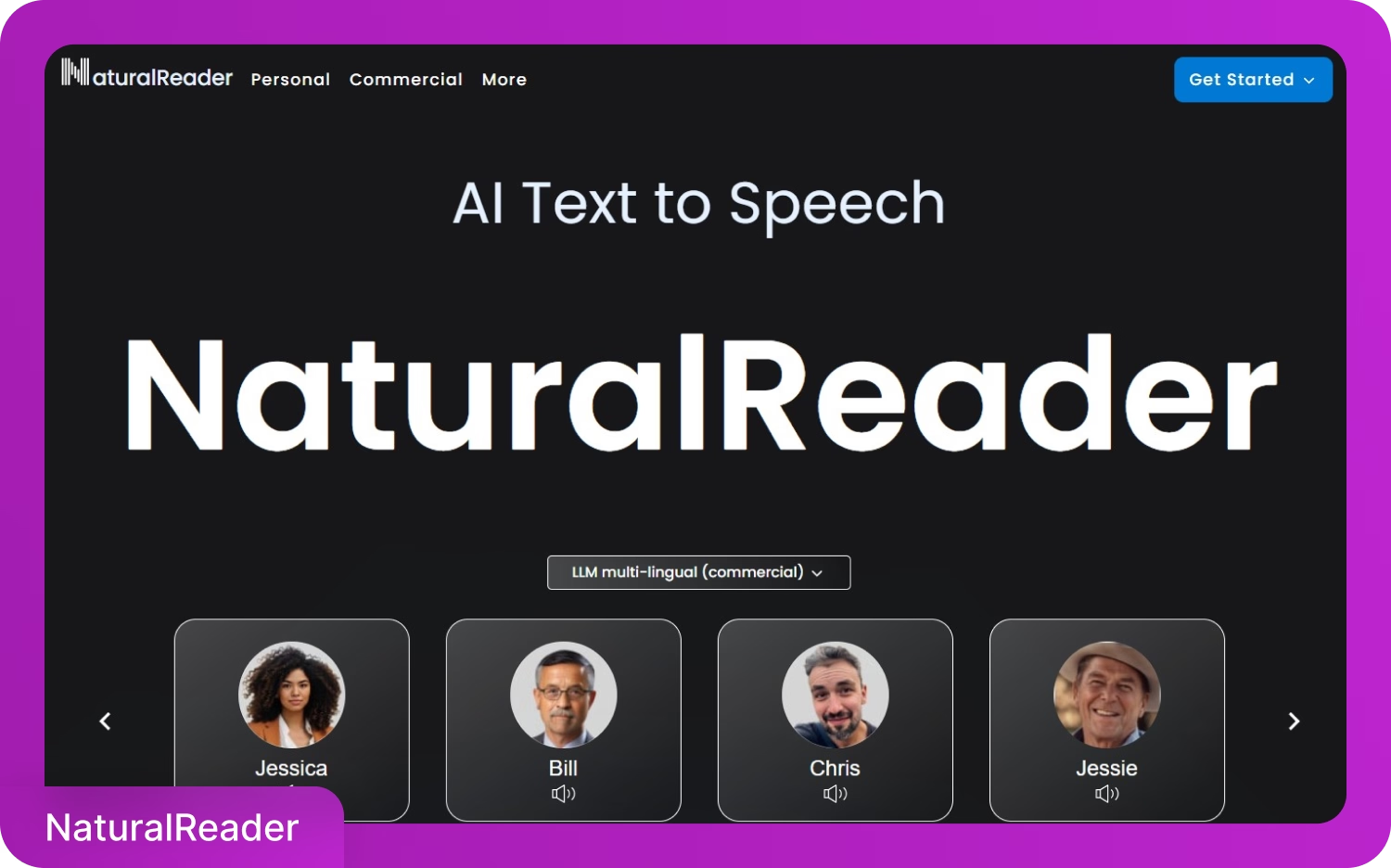
With ADHD, reading can be a struggle, but NaturalReader’s dyslexia-friendly font and word-by-word highlighting can be a lifesaver. You can follow along with the learning material while you listen and understand the assignments better. Besides, features like pronunciation editing and text filtering add to the accessibility.
Key Features
- Dyslexia Font: This unique font design makes it easy to distinguish individual letters and words.
- Word-by-word Highlighting: Highlight the words or sentences for the AI reader to read them out loud.
- Distraction-Free Reading: Its read mode cuts out ads or any distractions from the webpage.
- Language Support: The tool has a decent voice library across 100+ languages and accents.
Plans and Pricing
- Plus: At $20.90/month, it offers 500,000 characters/day of listening and other native features.
- Pro: At $25.90/month, it allows conversion to HD Pro voices and others.
Which Reading Assistant is Best for ADHD?
The best reading assistant for ADHD depends on your specific needs, budget, and use cases. Here’s a comparison table of the top tools to help you make a better choice.
| Features | Speaktor | Murf | Speechify | ElevenLabs | NaturalReader |
|---|---|---|---|---|---|
| Multiple Language Support | ✅ | ✅ | ✅ | ✅ | ✅ |
| Voice Quality | Ultra-realistic and human-like | Good quality voice | Little Robotic | Standard quality | Decent voice quality |
| Output Format | MP3, WAV | MP3, WAV | MP3 (Download available on premium plan only) | MP3, WAV | MP3, WAV (44.1kHz) |
| Speed Control | ✅ | ✅ | ✅ | ✅ | ✅ |
| Free Trial | ✅ | ✅ | ✅ (limited features accessible) | ✅ (limited to 128kbps and 44.1kHz audio download) | ✅ |
Conclusion
Living with ADHD has some unique challenges, and although they interfere with your daily life, these are manageable. For example, you can get them on medications, set up routines, and establish a distraction-free environment. Also, you can hand over a reading assistant for ADHD that boosts accessibility to learning materials, supports multiple languages, and offers customizations. Speaktor stands out as the best TTS tool that offers everything mentioned and more. So, use it today, and make reading and engagement simple for your loved ones with ADHD!
Frequently Asked Questions
The reading tool for ADHD is one that narrates your text in a natural voice in multiple languages and lets you customize its pace, tone, and pitch. This makes the written material more accessible to individuals with ADHD, helping them comprehend it better. Among the available tools, Speaktor stands out with its hyper-realistic voices, multiple language support, and customizations.
If you want to fix ADHD when writing, write out the why of the text, read out a printed article rather than a webpage, summarize it, and most importantly, remove distractions from the environment.
Fonts like Open Sans and Verdana are more readable for users with ADHD or cognitive disorders. Tall letters, good spacing, bold outline, and strong distinction between similar-looking letters make them more ideal.
With advancements in AI, multiple TTS tools have emerged, but Speaktor stands out with its simple interface and its advanced features. There’s support for 50+ languages and 15+ voices, alongside AI voice customization, and others.
Many ADHD users have working memory impairments, which make it difficult to get the main idea in a story and recall the details. Also, they fail to connect what they’re reading now with what they’ve read in the past.

